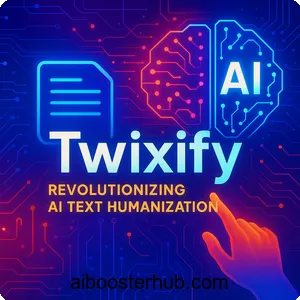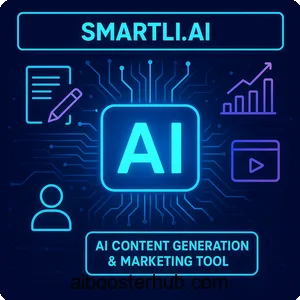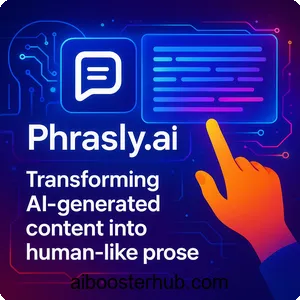AI content creation: How to generate high-quality content using AI
Creating high-quality content consistently is a challenge for businesses, marketers, and creators. With the rise of create content AI tools, artificial intelligence has transformed the way we produce, optimize, and distribute content. AI automated content creation streamlines workflows, enhances creativity, and ensures content aligns with audience needs. By leveraging artificial intelligence writing tools, anyone can produce engaging, SEO-optimized content efficiently.
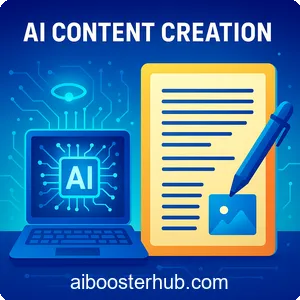
This comprehensive guide explores content creation workflows, prompt engineering strategies, tool reviews, SEO optimization tips, and quality control methods to help you harness AI for top-tier content.
Content
Toggle1. Understanding AI content creation
AI content creation involves using artificial intelligence to generate text, images, or multimedia tailored to specific goals. These tools analyze vast datasets to produce human-like content, from blog posts to social media captions. The power of create content AI lies in its ability to automate repetitive tasks, suggest ideas, and optimize content for search engines, saving time while maintaining quality.
AI tools range from simple text generators to advanced platforms that integrate with content management systems. They can draft articles, create outlines, or even generate marketing copy based on user inputs. By understanding how these tools work, you can integrate them into your workflow to boost productivity and creativity.
Why AI content creation matters
The demand for fresh, engaging content is relentless. Businesses need blog posts, product descriptions, and social media updates to stay relevant. AI automated content creation reduces the time and effort required to produce this content. It allows creators to focus on strategy and creativity while AI handles repetitive tasks like drafting or keyword optimization. Additionally, AI tools can analyze audience preferences, ensuring content resonates with target readers.
Key benefits of AI in content creation
- Speed: AI generates drafts in seconds, accelerating content production.
- Scalability: Produce large volumes of content without sacrificing quality.
- Cost-efficiency: Reduce reliance on large content teams or outsourcing.
- Customization: Tailor content to specific audiences using data-driven insights.
- SEO optimization: AI tools suggest keywords and structure content for better search rankings.
By incorporating artificial intelligence writing tools, businesses can stay competitive in content-heavy industries like marketing, e-commerce, and media.
2. Building effective content creation workflows
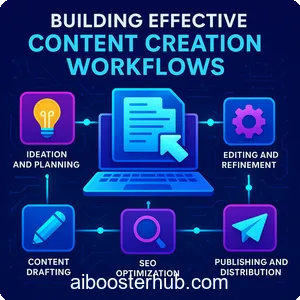
A streamlined workflow is essential for maximizing the potential of create content AI. By integrating AI tools into your process, you can create a seamless system for ideation, drafting, editing, and publishing.
Steps to create an AI-driven workflow
- Ideation and planning: Use AI tools to generate topic ideas based on trending keywords or audience interests. Tools like topic generators analyze search data to suggest relevant subjects.
- Content drafting: Input prompts into AI writing tools to create initial drafts. These drafts can serve as a foundation for blog posts, emails, or ad copy.
- Editing and refinement: Use AI-powered editing tools to polish grammar, tone, and style. These tools ensure consistency and readability.
- SEO optimization: Incorporate AI-driven SEO tools to analyze keyword density, readability, and meta descriptions.
- Publishing and distribution: Schedule content using AI-integrated platforms that optimize posting times for maximum engagement.
Tools to enhance workflows
Several artificial intelligence writing tools streamline content creation workflows:
- Content generators: Tools like Jasper and Copy.ai produce drafts based on user prompts.
- Editing assistants: Grammarly and ProWritingAid refine grammar and style.
- SEO platforms: SurferSEO and Ahrefs optimize content for search engines.
- Automation tools: Platforms like Zapier integrate AI tools with publishing platforms for seamless workflows.
By combining these tools, you can create a robust system that minimizes manual effort and maximizes output.
3. Mastering prompt engineering strategies
Prompt engineering is the art of crafting inputs to guide AI tools toward producing desired outputs. Effective prompts are clear, specific, and context-rich, ensuring AI automated content creation delivers high-quality results.
Crafting effective prompts
To get the best results from artificial intelligence writing tools, follow these prompt engineering strategies:
- Be specific: Instead of “Write a blog post,” use “Write a 500-word blog post about AI content creation for small business owners, focusing on SEO benefits.”
- Set the tone: Specify the desired tone, such as “professional,” “conversational,” or “persuasive.”
- Include context: Provide background information, like target audience or content goals.
- Use examples: Share sample content to guide the AI’s style and structure.
- Iterate: Refine prompts based on outputs to improve accuracy over time.
Examples of effective prompts
- Blog post: “Write a 1,000-word article on AI content creation, targeting digital marketers. Include sections on workflows, tools, and SEO tips. Use a professional yet engaging tone.”
- Social media: “Create five Twitter posts promoting an AI writing tool, emphasizing time-saving benefits for freelancers. Keep each post under 280 characters.”
- Product description: “Write a 100-word description for an AI content tool, highlighting its automation features for e-commerce businesses. Use persuasive language.”
By mastering prompt engineering, you can unlock the full potential of create content AI, ensuring outputs align with your vision.
4. Reviewing top AI content creation tools
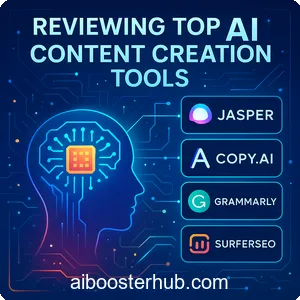
Choosing the right artificial intelligence writing tools is critical for success. Below, we review popular tools, focusing on their features, strengths, and use cases.
Jasper
Jasper is a versatile AI writing platform designed for marketers and businesses. It excels at generating blog posts, ad copy, and social media content. Its templates and tone adjustments make it ideal for AI automated content creation. Jasper integrates with SEO tools, ensuring content is optimized for search engines.
Strengths: User-friendly interface, customizable outputs, strong SEO integration.
Use cases: Blog writing, marketing copy, content brainstorming.
Copy.ai
Copy.ai specializes in short-form content, such as social media posts, email subject lines, and product descriptions. It offers a wide range of templates and supports multiple languages, making it suitable for global campaigns.
Strengths: Fast content generation, diverse templates, multilingual support.
Use cases: Social media, email marketing, quick copywriting.
Grammarly
While primarily an editing tool, Grammarly’s AI-powered suggestions enhance content quality. It refines grammar, tone, and clarity, ensuring polished outputs. Its browser extension integrates with most writing platforms.
Strengths: Real-time editing, tone detection, readability analysis.
Use cases: Proofreading, style improvement, professional communication.
SurferSEO
SurferSEO focuses on optimizing content for search engines. It analyzes top-ranking pages and suggests keyword placement, content length, and structure to improve rankings.
Strengths: Data-driven SEO insights, competitor analysis, content editor.
Use cases: Blog optimization, keyword research, content audits.
These tools, when used together, create a powerful ecosystem for create content AI, covering drafting, editing, and optimization.
5. SEO optimization tips for AI-generated content
SEO is critical for ensuring AI-generated content reaches its audience. By combining artificial intelligence writing tools with SEO best practices, you can boost visibility and engagement.
Keyword research and integration
Use AI-powered SEO tools to identify high-value keywords related to create content AI and AI automated content creation. Tools like Ahrefs or SEMrush suggest keywords based on search volume and competition. Integrate these keywords naturally into:
- Headings: Include primary keywords in H1 and H2 tags.
- Body text: Maintain a keyword density of 1-2% to avoid over-optimization.
- Meta descriptions: Write compelling meta descriptions with target keywords.
Content structure
AI tools can generate structured content, but you must ensure it aligns with SEO standards:
- Use headers: Break content into H2 and H3 sections for readability.
- Short paragraphs: Keep paragraphs under 100 words for better user experience.
- Internal linking: Link to related content on your site to improve navigation and SEO.
- Alt text for images: Use descriptive alt text with keywords for accessibility and SEO.
Readability and engagement
AI-generated content should be easy to read and engaging. Use tools like Hemingway Editor to ensure concise, clear language. Incorporate bullet points, lists, and visuals to break up text and retain reader attention.
Monitoring performance
After publishing, use AI-driven analytics tools to track performance. Platforms like Google Analytics or SurferSEO provide insights into traffic, bounce rates, and keyword rankings. Adjust content based on these metrics to improve results.
6. Quality control methods for AI content
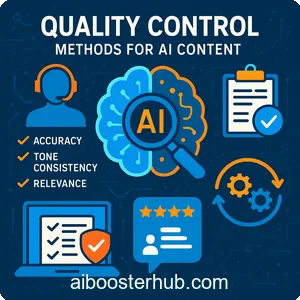
While create content AI produces impressive results, quality control is essential to ensure accuracy, relevance, and brand alignment. Implementing robust quality checks prevents errors and maintains credibility.
Human oversight
AI-generated content should always be reviewed by a human editor. Check for:
- Accuracy: Ensure facts and data are correct.
- Tone consistency: Verify the content matches your brand’s voice.
- Relevance: Confirm the content addresses audience needs and goals.
Plagiarism checks
Use tools like Copyscape or Grammarly to verify originality. AI tools can sometimes produce content similar to existing sources, so plagiarism checks are critical to maintain authenticity.
Fact-checking
AI may generate plausible but incorrect information. Cross-reference data with reliable sources, especially for technical or niche topics. This ensures your content is trustworthy.
User feedback
Collect feedback from your audience to gauge content effectiveness. Use surveys or comment sections to understand what resonates and where improvements are needed.
Iterative improvement
Refine AI prompts and workflows based on quality control findings. Over time, this iterative process enhances the output of artificial intelligence writing tools, ensuring consistently high-quality content.
7. Future trends in AI content creation
The field of AI automated content creation is evolving rapidly. Staying ahead of trends ensures your content strategy remains competitive.
Personalization at scale
AI tools are becoming better at tailoring content to individual users. By analyzing user data, AI can create personalized blog posts, emails, or product recommendations, increasing engagement.
Multimodal content
Beyond text, AI is generating images, videos, and audio. Tools like DALL·E and Runway create visuals to complement written content, offering a richer user experience.
Voice and conversational AI
With the rise of voice search and chatbots, AI is optimizing content for conversational queries. This trend emphasizes natural language and question-based formats.
Ethical considerations
As create content AI grows, ethical concerns like transparency and bias are gaining attention. Creators must ensure AI-generated content is disclosed appropriately and aligns with ethical standards.
By staying informed about these trends, you can adapt your artificial intelligence writing tools to meet future demands, ensuring your content remains relevant and impactful.
8. Conclusion
AI content creation is revolutionizing how businesses and creators produce high-quality content. By leveraging AI automated content creation and artificial intelligence writing tools, you can streamline workflows, optimize for SEO, and maintain quality through robust checks. From crafting effective prompts to choosing the right tools, this guide provides a roadmap for success. Embrace these strategies to create engaging, scalable content that resonates with your audience and drives results.

